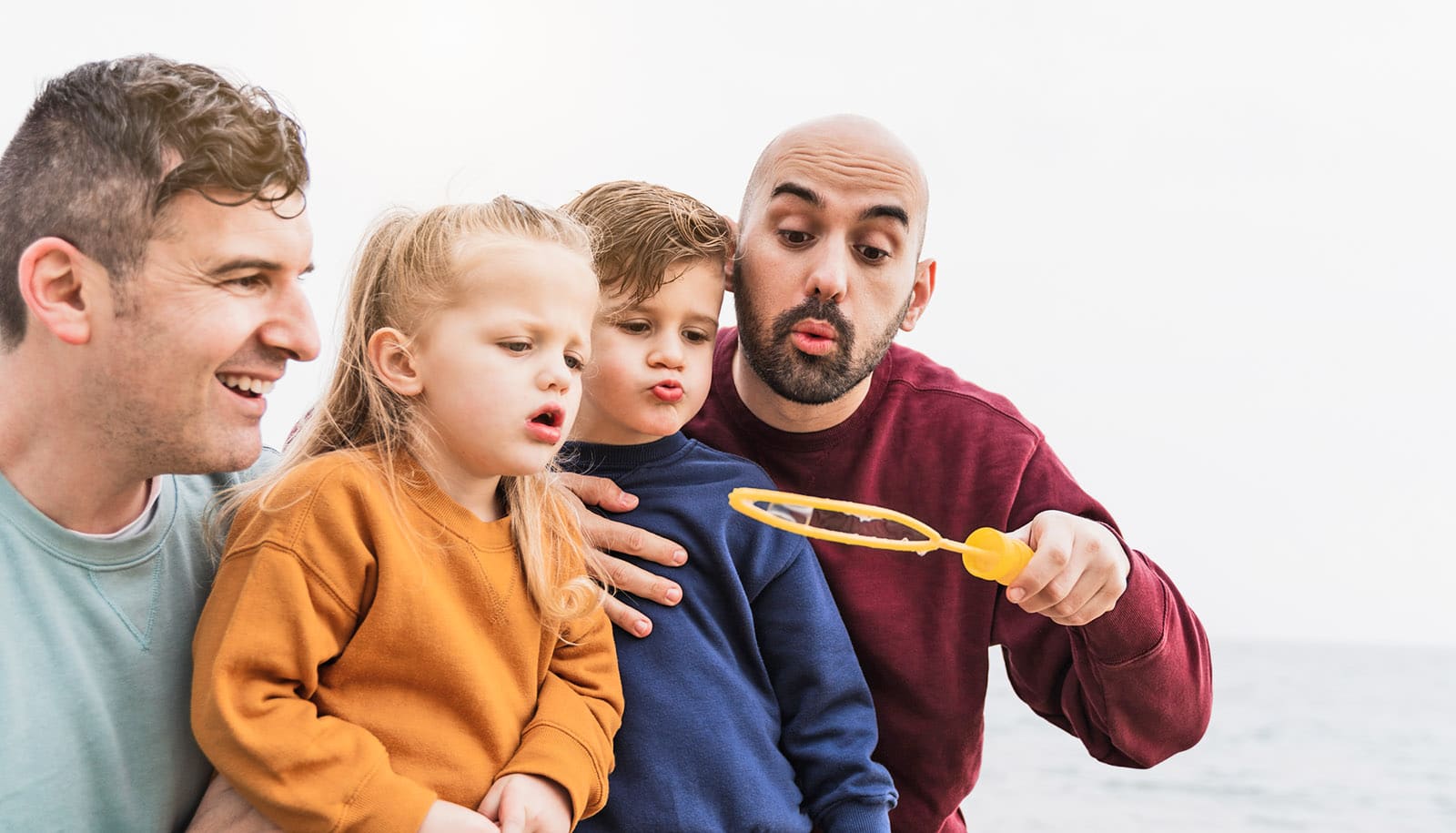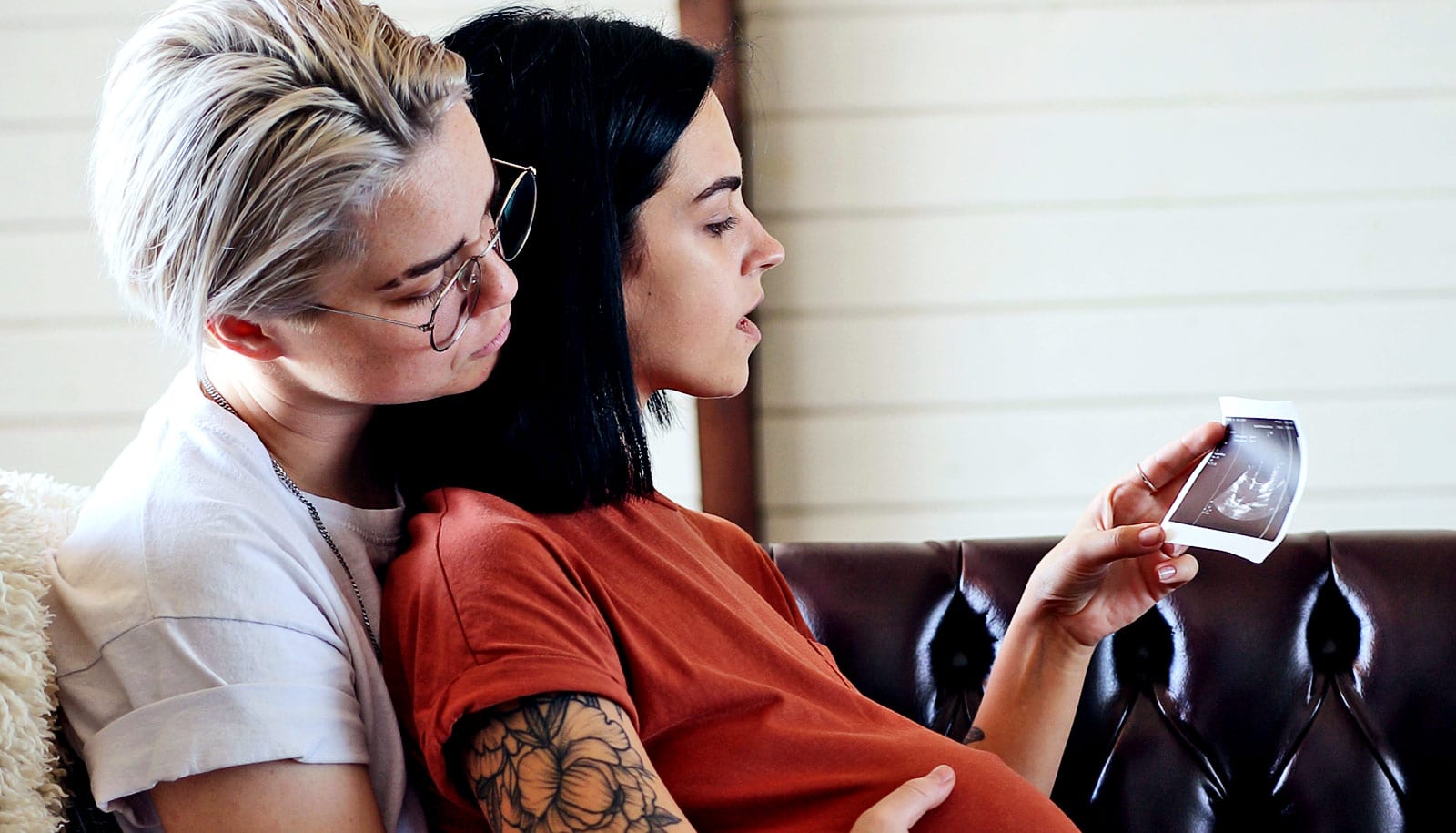A new study documents how gay men use assisted reproductive technology to build their families, including how many children they want and how often their efforts succeed.
Most people hoping to become parents envision having children who are genetically related to them. But for gay men, this process is complicated and expensive. Seeing it through involves collaboration with a fertility doctor, a lawyer, a gestational carrier (a.k.a. surrogate mother), and an egg donor.
The process takes about two years and costs around $200,000 per child—and prospective gay fathers don’t meet eligibility criteria for most health insurance plans’ fertility benefits, although this is beginning to change.
Brent Monseur, who is completing his postdoctoral fellowship at Stanford Medicine in reproductive endocrinology and infertility, speaks about the study in Fertility & Sterility Reports here:
How did this study come about?
A refrain that many LGBTQ people, including myself, heard after coming out, was “You’ll never be able to have a family.” Thankfully this is less common now, but for a long time this comment reflected prevailing social norms and a misconception that reproductive science wasn’t advanced enough for LGBTQ people to become parents.
As a gay person growing up in a conservative environment, this was a challenge I thought about. I don’t know that I want to have children, but I didn’t want someone to tell me I couldn’t. So I went looking into how I might build a family. As a young person, it was really hard to find that information. (This was around 20 years ago; I’m 35 now.) There was nothing at the library and very little on the internet, but I figured it probably would involve a doctor.
In graduate school at Johns Hopkins, before I went to medical school, I worked with fertility doctors. I asked them how I could start a family as a gay man. They explained the whole process; it was super complicated. Then they said, “You wouldn’t be able to be a patient here. We don’t take care of gay men…but we should.” I decided, I’m going to go to medical school and be a doctor who does provide reproductive care to all LGBTQ people.
Your paper gives historical context for how shifting attitudes toward LGBTQ families have changed the climate for gay men who want to become fathers. Can you summarize?
The simplest way to put it is that LGBTQ families have shifted from being a paradox to a possibility. We went from being criminalized and pathologized to more accepted.
There has been a lot of focus in the scientific literature on whether children turn out OK if they have gay parents. There’s no data to suggest anything detrimental to children about having gender- or sexual-minority parents. Not only is it now socially “OK” for LGBTQ people to have children, there are also people now advocating for LGBTQ families.
In my own field, the professional organization that sets practice guidelines for fertility doctors says everyone should have access to fertility care. Many institutions whose fertility clinics didn’t previously treat everyone—including Johns Hopkins, where I went to grad school—now do so.
But there are still barriers. Some fertility clinics in this country still won’t take care of LGBTQ patients, and most health insurance plans that offer fertility benefits use a clinical definition of infertility based on a heterosexual couple trying to conceive for 12 months with no pregnancy. A gay couple in New York State recently sued, saying those criteria are discriminatory.
Why is it important for the experiences of gay men seeking fertility care to be reflected in the scientific literature?
Most work in reproductive medicine has focused on infertile, cisgender heterosexual women. Cisgender gay men are almost never included in this research, so as physicians we don’t know anything about their characteristics as reproductive health patients, even basic information such as their demographics, clinical decision-making patterns, or outcomes.
Our paper used data from one of the very few fertility benefit companies that does offer fertility coverage to gay men. That gave us a window into a national group of 119 cisgender men, including five single men and 57 gay couples, who uniquely had fertility benefits. Even though this study is still relatively small, it’s the largest study of US men going through this process to date. I have often started my patient consultations by saying “There’s not really any research on how to do this,” but now we’ll be able to say “You are in the literature. Your decision-making and outcomes have been studied.”
Based on our data, the success rates for ultimately having a child are really high for this population. At the time of the study, about 70% of the people in our study population had completed both egg donation and embryo transfer to a gestational carrier, with a live birth rate of 85%. It’s important to keep in mind that our data reflect the experiences of individuals who can afford reproductive medical care because their employer-sponsored fertility benefits cover it, and that is still an unusual situation for gay men.
This data served as the foundation for a grant application we’ve just had approved to conduct a much larger population study that will give us access to information on about 2,000 embryo transfers annually in gay men.
What are the most important aspects of your findings?
This is a group that has overwhelmingly successful birth rates, and in fertility medicine, that is unusual. A lot of people see a fertility doctor because they have an underlying medical issue, whereas gay male couples usually have two possible sperm sources, a young egg donor, and a gestational carrier who has already had successful pregnancies. I think that, because of these medical factors, birth rates for gay couples could serve as a modern standard for evaluating the success of IVF labs.
The other thing, which aligns with findings in lesbian/bisexual women, is that there is a high rate of twin pregnancies. In our study, the rate of transferring more than one embryo to the gestational carrier was not in line with the standard of care, which strongly recommends transferring a single embryo; it was much higher. We recognize that this may be because a lot of gay men request twins or may ultimately want two children, and fertility doctors may be transferring two embryos to try to save their patients money so they only have to go through the fertility treatment process once. But we need to ask: Are we putting gestational carriers at unnecessary risk from twin pregnancies, and putting gay couples at unnecessary risk of having babies in the NICU? I believe better insurance coverage for fertility care for LGBTQ people would be a safer, healthier way to address the financial pressure.
Before I was an OB/GYN, I thought “This is a health access issue, and if gay men want twins we should respect their autonomy.” But once you take care of complicated pregnancies and realize the risks, it becomes clear that your goal is not to hurry. The goal is one healthy baby at a time.
What does it add to have physician-scientists like you, who are gay themselves, answering research questions about this population of prospective parents?
There is research to show that patients do better when their physician is a member of the same race. I suspect that same logic applies for members of the LGBTQ community. I’m currently a fellow, and I have patients coming specifically to see me, not because I’m the most amazing doctor but because I’m gay, and they want a gay doctor. Also, it’s important because I’m publishing the first study in this area—sometimes, if you don’t have the lived experience, you don’t consider what people in that community do or what’s important to them. The work just isn’t being done otherwise.
Source: Stanford University



